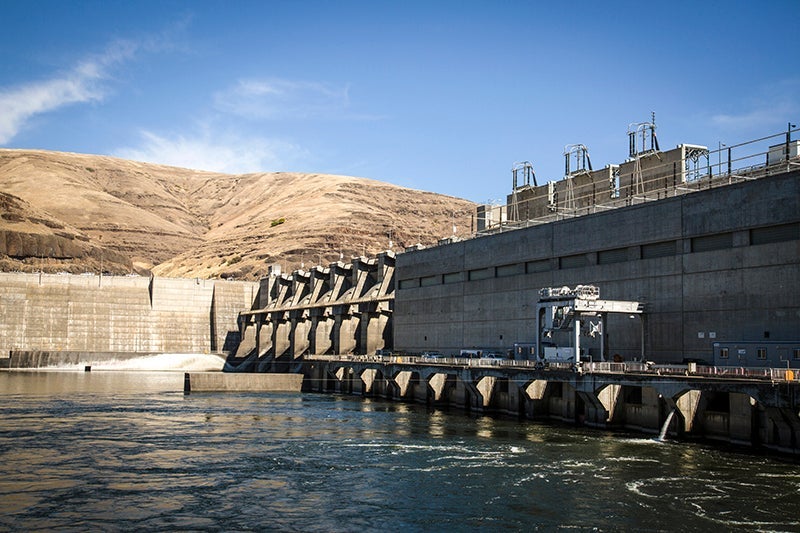Federal Agencies Plan to Revise Flawed Environmental Study for Columbia Basin Hydropower Operations
Salmon advocates commend the move to revise the study as a critical next step in a comprehensive plan to restore the Columbia Basin’s native fisheries
Contact
Two federal agencies jointly announced plans today to update the flawed environmental study that currently underpins management of Columbia and Snake River dams. Revising this study should lead to changes in the Columbia Basin that would help prevent extinction and restore imperiled salmon and steelhead populations to healthy and harvestable abundance.
Earthjustice and the plaintiff groups it represents applauded the action as a critical next step in an agreement signed a year ago between the federal government, the states of Washington and Oregon, four lower Columbia Basin tribes and conservation, fishing and renewable energy groups represented by Earthjustice. That agreement is based on the Columbia Basin Restoration Initiative (CBRI), a comprehensive plan to restore the basin’s native fisheries that the federal government pledged to support through specific commitments. The CBRI was developed by four tribes and two states (the Six Sovereigns) as a durable guide for basin restoration and Northwest energy planning for many years into the future.
In a federal notice of intent posted online today that will be published in the Federal Register tomorrow, the U.S. Army Corps of Engineers and the Bureau of Reclamation said that based on new information, they plan to prepare a supplemental environmental impact statement (SEIS) that would update the 2020 Columbia River System Operations Environmental Impact Statement (EIS).
“At least four Columbia and Snake River salmon and steelhead stocks have already gone extinct and 13 others — including all four remaining Snake River stocks — are listed under the Endangered Species Act. We must have a strong study and plan based on the best available science that will ensure restoration of imperiled native fish populations to healthy and harvestable levels,” said Northwest Sportfishing Industry Association Policy Director Liz Hamilton. “Revising this study is the logical next step toward meaningful change that complies with the law and the needs of the fish.”
“The 2020 EIS and Record of Decision continued the flawed and failed results of previous plans,” said Sierra Club’s Snake/Columbia River Salmon Campaign Director Bill Arthur. “We appreciate the decision to do a supplemental process to address these flaws and evaluate stronger measures in how we operate the hydropower system including breaching the lower Snake River dams. Extinction is not an option and that is the trajectory we are on without stronger actions.”
“It’s clearer than ever that we need a major course change, with new information showing many salmon populations in the basin hovering near extinction,” said Earthjustice Senior Attorney Amanda Goodin. “The information available now provides us with all we need to chart a successful path forward. We know we can avoid extinction and rebuild salmon and native fisheries to a healthy and harvestable abundance if we commit to the centerpiece actions they need, including breaching the four lower Snake River dams and replacing their services. We also know we have no time to lose.”
The current management plan, based on the flawed EIS, was challenged in court by plaintiff groups represented by Earthjustice, the state of Oregon, and the Nez Perce tribe. That litigation is currently stayed while the parties work collaboratively on an updated fisheries restoration plan. The notice issued today is an important step in that direction.
Some of the new information that led agencies to conclude a new study was warranted includes a June 2024 report by the U.S. Department of Interior that comprehensively documented the ongoing harm to Northwest tribes from Columbia Basin dams as well as anticipated changes in the river system resulting from the modernization of the Columbia River Treaty. Other new information includes replacement planning for the transportation, water supply, energy, and recreation services currently provided by the lower Snake River dams, the 2022 report by the National Oceanic and Atmospheric Administration (NOAA) that detailed necessary actions to avoid extinction and restore healthy and abundant salmon throughout the Columbia Basin, and more.
A federal promise to re-examine the current environmental study that informs Columbia Basin dam operations was among the federal commitments tied to the Resilient Columbia Basin Agreement, signed just over a year ago on Dec. 14, 2023.

Additional Resources
About Earthjustice
Earthjustice is the premier nonprofit environmental law organization. We wield the power of law and the strength of partnership to protect people's health, to preserve magnificent places and wildlife, to advance clean energy, and to combat climate change. We are here because the earth needs a good lawyer.